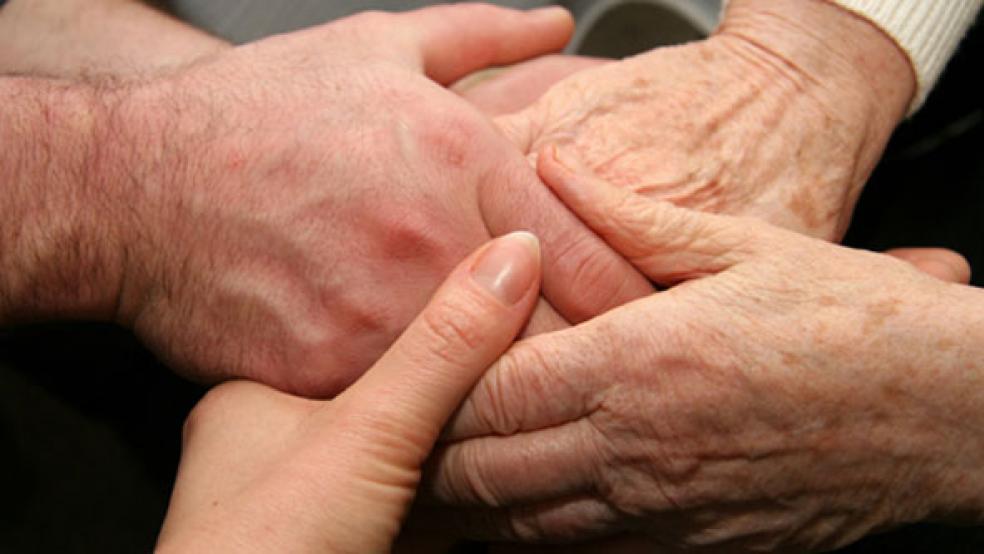For the past two or three centuries, the focus of our greatest minds has been on creating governments, technologies and institutions that support the ideal of longer, fuller and healthier lives – even if many have been left out. But once the inevitable approaches and life draws to an end, how well do we die?
The question makes most Americans squirm, since it assumes that we are giving up on people we love and care about. We are a culture that hopes for miraculous cures and extols ‘Dr. House’ heroics. But as we age, medical technology is able to keep our bodies functioning beyond a hope of recovery. Is this really the best way to spend our last days?
This is the basic question at work in a new white paper from the Economist Intelligence Unit, published in conjunction with the Singapore-based Lien Foundation, called “The Quality of Death: Ranking end-of-life care around the world.”
For the first time, the study attempts to quantify the quality of dying and to rank how well people die in 40 countries. The U.S. comes in ninth, tying with Canada. First place in this melancholy contest goes to the United Kingdom – with Australia and New Zealand coming in second and third, and China, Brazil, Uganda and India bringing up the rear.
Researchers based their “Quality of Death Index” on the basic end-of-life environment, availability, cost and quality in a country. By “end-of-life” care the authors mean primarily palliative care – which usually means a backing off of aggressive medical interventions and an effort to make patients comfortable, their families accessible, and their pain, if any, treated with ready access to meds. They used some quantifiable metrics, like life expectancy and percentage of GDP spent on health care, and some qualitative measurements, like how aware the public is of end-of-life options.
The U.S. ranked in the top 10 in all categories except for the cost of care to the patient. Not surprisingly, with the most expensive health care per capita in the world, the U.S. ranked 31st, with Australia and the Netherlands placing first and second.
Some countries, even a few wealthy ones, rank surprisingly low due in part to cultural taboos that don’t encourage a frank conversation about death – Japan (25th), Finland (28th), and China (37th). Others lack resources – Uganda (29th) and India (30th).
The study makes the case that the liberal use of palliative care can save money. For instance, Spain saw a drop of 61 percent in spending for end-of-life care when they shifted from conventional hospital treatments to palliative care between 1992 and 2006.
An article in The Fiscal Times earlier this year noted that using palliative care in the final weeks of life reduced health costs per person by $2300, according to a study by Duke University health care analyst Donald Taylor. Savings could be far more, said Taylor, if patients and families talked about end-of-life decisions earlier and shifted sooner to palliative care.
The Worldwide Palliative Care Alliance (WPCA) says that 100 million people each year could benefit from hospice and palliative care – including patients and their family members, but only about 7 percent access it.
Another troubling finding is how many people around the world are denied access to painkillers. The study cites a World Health Organization statistic that 5 billion people lack access to opiates and other painkillers, mostly because they are so tightly policed as controlled substances. The study – which interviewed experts in palliative care and gerontology from around the world – also suggests that some physicians and health care providers are either poorly trained at administering painkillers, or are reluctant to provide them.
A drawback in the Economist study is the assumption that a good death is always associated with palliative-style care, or that deciding that the end is near and palliative care is called for is a clear-cut decision. In reality, end-of-life situations are often complicated by issues of personal and family preference; by cultural mores; and by a difficulty in knowing when to stop aggressive treatment. Polls show that almost three-quarters of Americans would prefer to die peacefully and pain free at home with their family, but there are also physicians and sometimes patients, too, who believe in heroic care even when they understand the choices, in part because people do occasionally respond and recover. The Economist study identifies this conundrum but doesn’t delve deeply enough into it.
Talking about death as part of our societal effort to live well is crucial to educating people about the choices of how we and our loved ones die – a process that can not only provide the best possible end, but also can reduce costs and help save our health care system.





